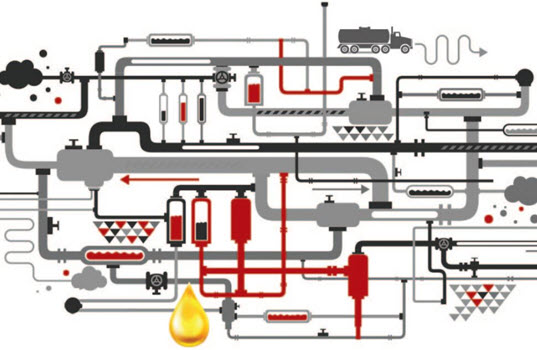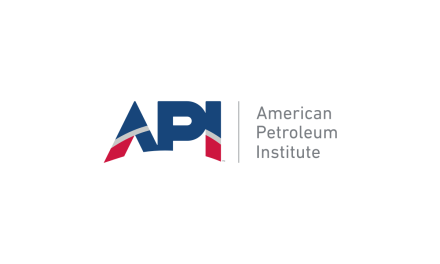By Richard Browne, Insite360
Fuel variance happens across your supply chain. Some of this is loss that needs to be understood for bookkeeping and does not have a financial impact, while other areas of loss are controllable and can contribute to improved financial performance for fuel retailers and jobbers.
Controllable Loss
By measuring and monitoring fuel through the supply chain, from rack to cash, several points of loss can be identified and improved. The most common areas of loss are:
- Meter over-dispensing. Gas dispenser meters generally drift in a positive direction, resulting in more fuel being dispensed than when calibrated. Between calibrations, this positive meter drift can result in significant fuel volume being giving away. As dispensers age, this drift can accelerate. All meters do not drift at the same rate, which combined with the dispensers age and gallons pumped, can result in a wide range of meter accuracy across a single site. Having an accurate reading of meter drift can help drive the correct balance between timing of meter calibration and fuel variance.
- Delivery Variance. There are several potential reasons why the amount of fuel on a bill of lading does not match the amount of fuel delivered. These reasons include delivery shortages, undocumented fuel left on board, theft, inaccurate tank calibration. Having a process that identifies, analyses and investigates this variance can provide the information and documentation needed to resolve discrepancies with your fuel logistics provider.
- Fuel theft. In monitoring the fuel supply chain, we’ve identified several types of theft that result in significant financial impact. These thefts can include intentional short deliveries, where a driver does not drop the full contents of a compartment, fuel diversions, where a 3rd party takes part of a shipment before it reaches the site, and tank siphoning, where thieves steal fuel from a site’s underground or above ground storage tanks. Other cases include theft at pumps by tampering with pulsars, site staff by passing POS, using some unauthorized device installation.
Each of these forms of variance can be quantified and used to drive corrective actions to reduce or eliminate their financial impact.
Other Variances
There are several areas of fuel loss that result in reconciliation issues where the actual fuel volume change is due to other factors. By getting greater insights into these areas, it is easier to ensure that your balance sheet is aligned between fuel inventory purchased and gallons sold.
These areas of variance include:
- Temperature impact on volume. When fuel is loaded and measured at the terminal, it is at one temperature. As it travels to your site, the fuel temperature will change based on weather conditions and other factors. When the fuel is dropped at the site, it’s volume will change again at the fuel adjusts to the in-ground tank temperature. Across this flow, the volume of the fuel may expand and contract resulting in different volume readings at each stage, creating inventory variances.
- Administration or paperwork errors. These mistakes can be due to errors in a bill of lading being filled in, inaccurate reporting of actual gallons sold at the pump.
- Tank & line leaks. Leaks big or small can have huge financial impact from remediation costs to fines, especially if undetected for a period of time. A spill during delivery that is not properly documented and reported can also result in an unexplained fuel variance. Risk mitigation and early detection is key in reducing the financial impact of these situations.
- Tank Calibration. Over a period tanks are subject to environment changes whereby the shape or angle of tank can change. Tank calibration versus the height to volume conversion can have an impact on accuracy of the reading and can also mask some real losses. Having an accurate tank chart can help with reducing unexplained variances that result in write offs.
- Equipment issues. If a site has defective equipment, including tank probes or meter drive wheels, inaccurate information could be reported, making accurate reconciliation difficult.
In addition to capturing sources of fuel loss and returning this lost fuel to your income statement as enhanced margins, a variance management program can help improve a convenience stores customer satisfaction and customer experience. By identifying and dispatching maintenance to address issues such as slow or low flow rates, retailers can avoid disappointing customers and improve their sites throughput.
While variance analysis can be tackled in house, many operators prefer using a third-party managed service to identify and manage sources of variance. The advantages of outsourcing fuel variance analysis include access by trained experts whose only job is working to find and fix these variances. When done in house, variance analysis is often performed as ‘one more thing’ by an overworked associate in accounting or fuel ops. Using an outsourced service leverages advanced algorithms, artificial intelligence and other technology that may not be accessible or affordable for operators to build on their own.
In an increasingly competitive fuel wholesale and retail market, capturing and addressing every source of inventory loss and understanding areas of variance can provide immediate benefits in both improved profits and customer satisfaction. Can you afford not to understand and address variance on your sites?
 Richard Browne, Growth and Business Development at InSite360, a Veeder-Root company. Browne is a fuel and c-store veteran and leading authority in downstream petroleum logistics and operational excellence. As a leading global supplier of fuel management solutions, Insite360 is the analytics business unit of Gilbarco Veeder-Root. The company optimizes commercial and retail supply chain operations with purchasing, logistics and environmental compliance.
Richard Browne, Growth and Business Development at InSite360, a Veeder-Root company. Browne is a fuel and c-store veteran and leading authority in downstream petroleum logistics and operational excellence. As a leading global supplier of fuel management solutions, Insite360 is the analytics business unit of Gilbarco Veeder-Root. The company optimizes commercial and retail supply chain operations with purchasing, logistics and environmental compliance.









